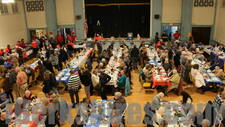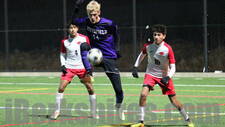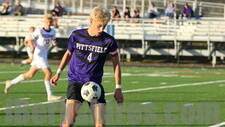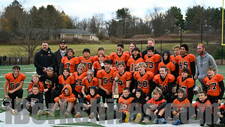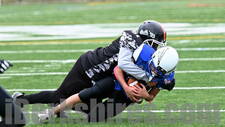Friday Health Focus: Coping With Hot and Humid WeatherBy Susan Bush
12:00AM / Friday, July 14, 2006
Now is the time to keep your cool.
Weather forecasters are predicting "triple H"-hot, hazy, and humid- conditions during the next few days, which means that a risk of heat stroke, heat exhaustion, and dehydration is present.
Infants, senior citizens, and those who are physically active during periods of heat and humidity face the greatest threat of heat-related conditions. Heat stroke is considered a medical emergency requiring medical intervention, according to information provided at a www.medicinenet.com Internet web site. Medical intervention is advised in cases of heat exhaustion and dehydration, and may be necessary when heat rash or sunburn have occurred.
Workplace Precautions
Construction, utility, and landscape workers are among those whose labors keep them outdoors in hot weather. Sharon Harrington, office manager of Countryside Landscaping, said that the company has steps in place designed to reduce employee risk of heat-related conditions.
"We have morning meetings and we talk about the heat and what it can do," Harrington said. "We really want the guys to take their breaks, and we want them to seek shade. We tell them what to watch out for. We want them to take a rest if they need it and we want them to stay hydrated."
"The newest thing this year is our ice machine. All the trucks have those big coolers and they fill up [with ice] before they leave the yard."
Employees are encouraged to enjoy extended lunch breaks during high heat and humidity conditions and are also encouraged to seek out appropriate sites for wading or a quick, cooling swim, she said.
The possible ramifications of ingesting alcoholic beverages, including beer, while on personal time, such as a hot and hazy evening, are also discussed, she said.
"We don't want to tell people what to do on their own time, we do want people to be aware of how it may affect them," she said.
Serious Situation
Heat stroke occurs when a person's body temperature becomes elevated. Other symptoms likely include a lack of sweating, the appearance of dry, hot, flushed skin, a rapid pulse, difficulty breathing,and odd behavior or hallucination, according to an article written by Dr. Melissa Conrad Stoppler and posted at www.medicinenet.com's web site. Dehydration can contribute to cases of heat stroke, according to the article
Medical intervention must be sought immediately. Heat stroke can lead to organ damage and may be fatal if medical help is not acquired. Emergency aid includes moving a person with heat stroke to a shaded area, removing clothing, and using cool or tepid , not ice-cold, water to cool the individual. Ice-packs may be placed beneath the armpits and groin area. Fanning someone affected with heat stroke is also advisable.
Emergency first aid is not a substitute for medical intervention.
Seek help immediately.
Seniors, Infants, And Toddlers
Senior citizens who live in places without air-conditioning or other significant cooling mechanisms may be at increased risk of heat stroke. Wellness checks for senior citizens are recommended during heat waves.
Infants and toddlers should avoid spending time outside in direct sunlight during hot, humid conditions. Wading or toddler-sized pools may be moved to shaded areas; children should never be left unattended around pools no matter what the weather.
Canine Risk
Dogs are also at increased risk of heat stroke during heat wave conditions. Leaving dogs in vehicles during hot weather is the most frequent cause of canine heat stroke, according to information available at a www.petplace.com Internet web site.
At-risk dogs include puppies under six months old, overweight dogs, dogs that are exercised excessively, certain breeds such as pugs, English bulldogs and Boston terriers, large breed dogs, and dogs with certain medical conditions. Symptoms of canine heat stroke include excessive panting,bright red mucous membranes such as the gums and area surrounding the eyes, weakness, collapse, or coma. A dog affected by heat stroke should be taken to a veterinarian or animal clinic immediately.
Reduce Risks
Heat-related conditions may be prevented. Humans may avoid heat stroke or heat exhaustion by drinking fluids such as water and Gatorade and avoiding alcoholic beverages, coffee, and tea, according to information posted at a www.medicinenet.com web site.
Wearing hats and light, loose clothing also may help prevent heat-generated conditions. Those who do not have to remain outdoors for prolonged periods should seek cool, interior spaces. Physical exertion should be kept to a minimum or avoided.
Canine heat stroke may be prevented. Information available at a www.petplace.com web site recommends that activity be kept to a minimum during hot, humid days, and exposure to sunlight be limited when the temperatures and humidity levels are high. Dog-walking should occur during early morning or evening hours, when the air may be cooler. Be certain that dogs have access generous water supplies and cool areas. Do not leave a dog in a vehicle during hot weather, even if windows are left partially open.
Extreme heat and humidity levels are expected to remain throughout the weekend and into next week, according to local weather predictions.
This article is meant as information only and is not a substitute for professional medical advice. Information in this article should not be used to diagnose or treat a medical or health condition. Anyone who believes that they are experiencing a medical problem should promptly contact a professional healthcare provider.
Susan Bush may be reached via e-mail at suebush@iberkshires.com or at 802-823-9367.
|




